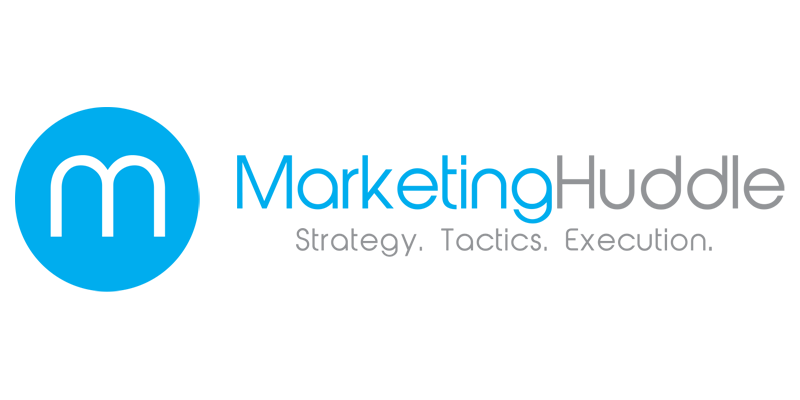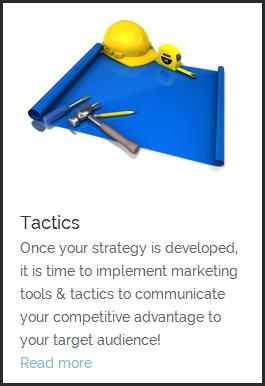Once you have your survey and interview questions ready, you’ll want to decide how you’re going to analyze and use this customer data to create profiles. Most survey tools will give you access to your data reporting and results of your survey after it’s finished. Use this data to look for trends among your respondents in the four categories mentioned earlier of demographics, psychographics, media and purchasing strategy.
If you have other data about your customers and their buying behavior in a CRM or database, you may want to export the data from your survey and merge it with this other data. Information such as purchase amount and purchase date can be very valuable for creating customer profiles. While analyzing your data, you should identify the traits that apply to your primary target customer. You should also consider lesser trends as traits of your secondary customer and create a profile for them as well. Identify the key demographics and behaviors based on the trends your data reveals.
Creating Your Customer Profile

Take any major trends that you see overwhelmingly represented in your respondents and write these into a basic customer profile. For example, if a particular age group, income level, employment status or gender is predominant, this is a feature of your primary target. If there’s a noticeable trend but it’s not quite so overwhelmingly represented, create a secondary target with it.
Your initial profile should be very specific in its details. Here is an example: The primary buyer of a tutoring service for high school students is a 40-50 year-old female who is married and has two children aged 6 to 16, and has a household income of $65-80,000 per year. You can create a targeted profile from your survey data alone. However, you also need to look at any open-ended questions and sift through these answers for more clues on your target customers. You can also use Survey Monkey’s advanced text analysis to make the sifting easier.
Analyzing Your Interview Data
In addition to your survey data, your interview results will give you more detailed and qualitative information. You’ll need this information for the best, in-depth picture of your customers. Your interview questions will have to be sifted through to find trends, but if you took good notes or had your recorded interview transcribed, this will help. As you conduct more interviews, you’ll get better at identifying the information that is most significant during the interview or when you’re reviewing immediately afterward. Try to add some of this attitude or opinion-oriented data to your customer profile in addition to demographics.
The best way to analyze interview data easily is to create a spreadsheet for presenting the results. This way, you can scan the cells for each question and see trends. Look for key words or themes in the responses. For example, let’s say that you asked the question, “What was the #1 reason you purchased our product or service?”
Answers might include:
- My friend told me she liked the product
- The customer service rep at the help desk was very helpful
- My mother mentioned it to me
For each response, you can assign a category or code. The first and third answer could be coded “Word of Mouth,” while the middle answer might be “Customer Service.” This gives you a more quantitative way to analyze these subjective, qualitative results.
Putting It All Together
When you create your customer profiles, you need to combine quantitative information from surveys, such as demographics or media habits, with qualitative or subjective data from open-ended questions and interviews. Both types of information are extremely critical in creating different customer ‘personas’ that give you a clear picture of who you’re targeting in your market. Your fictitious customer descriptions should feel like real people, and you can even give them names. You’ll then use the personas to guide all of your business decisions, such as content creation and product/service development.
The best way to create your personas is to start with your quantitative data. Look at the trends among respondents and create a simple profile that includes this data. Most will be demographic, such as the example we gave before for the tutoring service, although you may have some psychographic or purchasing data you want to include too. Next, add qualitative data from your open-ended questions and interviews in order to fill out your profile and draw a more complete picture. Your complete customer persona should have short fields where you have demographic information like age, gender, location, and so on, along with some areas for things like “Fears,” “Goals,” “Values”. These qualitative fields will be bigger.
Rather than numbers, use sentences or short phrases here. Try to pare your profile information down to make it as succinct and easy-to-digest as possible. For example, if a common response is, “I worry that I’m going to end up buying something that I won’t get full use out of,” you should write something like, “Worries about use-value.” You may want to include quotes in your qualitative information. You can take quotes directly out of your interviews and put them into your customer profile as-is. However, if you ever want to use the quotes publicly, be sure to get that person’s approval first.
As you go through the qualitative data, adding things like goals, fears, or feelings about purchasing to your profile, you may start thinking of ways to address these psychological factors. You might want to add a summary or elevator pitch to the end of your profile. This would summarize the reason your customer buys from you, and addresses ways you can meet their needs.
Other possible things to include are:
- The experience the customer wants
- How the customer is evaluated (at work)
- A day in the customer’s life
- Information resources
- Objections to purchasing your products
- How that customer usually finds you
Here’s what a simple customer persona might look like for one typical customer of a social media marketing consultant who works with small businesses:
Customer Profile 1
Name: Sarah
Title: Small Business Owner
- Nutrition counseling and products
- Key decision maker with 2 assistants
Demographics:
- Age 40-49
- Majority female
- $75,000/year
- Suburban
- Master’s degree
- Married, 2 children
Values:
- Family first
- Making an impact on people’s lives
Goals and Challenges:
- Relying too much on 1:1 counseling for income
- Not enough time with her children
- Needs to increase income due to rising costs of providing for children
How we can help:
- Set up and manage a social media ad funnel to bring in new prospects
- Set up and manage posting to her social media profiles/groups
- Get more mileage from and traffic to her older content
Fears:
- Afraid clients will leave (customer retention)
- Worried about how credible she appears to prospects
Objections to purchase:
- Won’t be personal if someone else does her social media
- Her reputation could be harmed if done badly
- Won’t get enough results to justify the expense
Our Unique Value Proposition:
When we manage your social media, it’s as if you just cloned yourself. We work closely with you to get a deep understanding of you, your business values, and the goals you have for your customers. Also, take a look at the excellent sample customer personas here to get ideas of what you might include in your own: Click here to see sample buyer personas from HubSpot
The most important thing to remember is that no two customer profile templates are alike. You need to create one that includes the information that’s critical for your own business. Include the information you need for making decisions about your content and products/services. It’s also very likely that you will find more than one trend among your customers. In other words, you’ll have more than one customer profile to create. If this is the case, create multiple profiles but keep it to 3 at most. With 3 profiles or less, you can still target your marketing, but if you have more than this, it will be difficult to create a unified message.
Learning Activity:
- Once you’ve received answers from your first survey, review the data that your survey instrument provides. Download the report and note trends you see. Use that data to create an initial customer profile.
- Once you’ve already conducted your interviews, create a spreadsheet or use the provided worksheet to analyze the answers you received.
- Based on what you know to-date about your customers, craft a more complete sample profile statement of your primary target customer. Use a fictitious name for your profile and include more than one profile if the data makes sense for you to do that. Use the template provided as a guide only. Create your own based on the information you collected.








